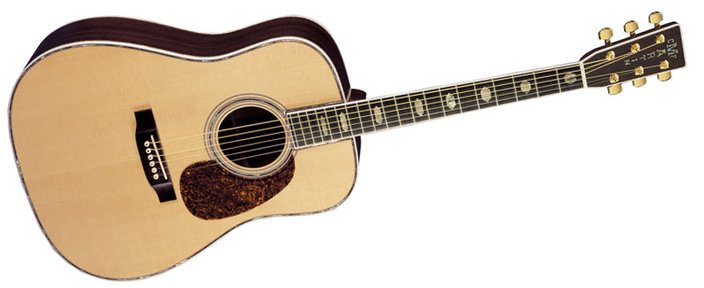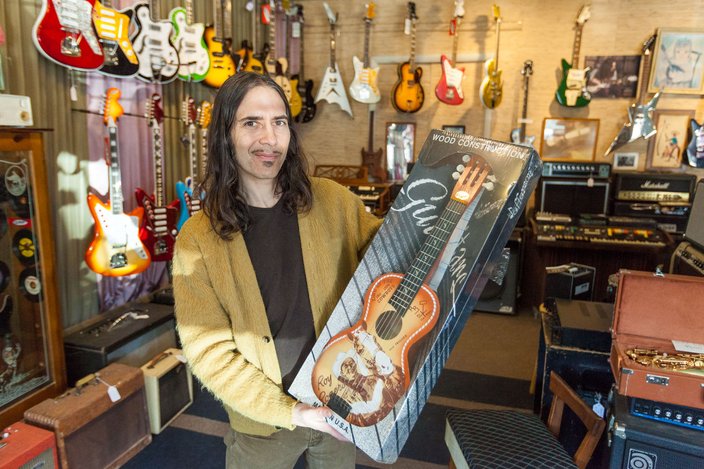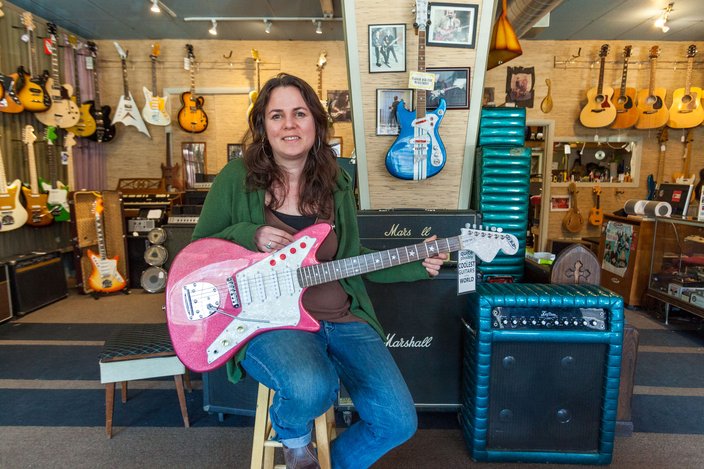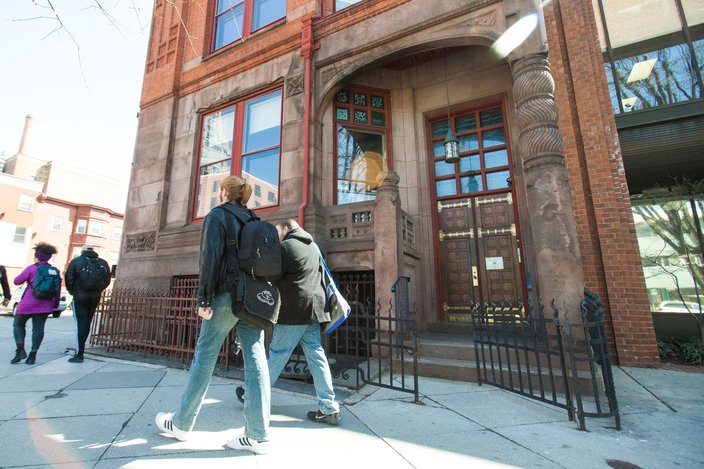Next year, guitar manufacturer
C.F. Martin Co., based in the Lehigh Valley, marks the 100th anniversary of its "Dreadnought" model. When it was introduced, the instrument seemed odd; it was much larger than the standard European guitar, but it boasted correspondingly deeper tones.
Since then, it has become the standard bearer for what we think of as an acoustic guitar, so wildly popular that it accounts for about 80 percent of the company's output. Just about every manufacturer has copied its distinct form, and guitarists from Eric Clapton and Keith Richards to Philly icons John Oates and Daryl Hall have spoken lovingly of their Martin collections.
The D-45 Dreadnought is the flagship model of the Standard Series. The list price is $10,999. Photo, Martin & Co.
The Martin legacy may be the strongest association the Philadelphia region has with the favorite instrument of folkies and rockers, but it's not the only one.
For example,
Epiphone, another big guitar maker, was briefly located here in the mid-1950s. A celebrated acoustic brand founded in 1870s Greece, it was eventually acquired by
Gibson, which moved it to the company’s headquarters in Kalamazoo, Michigan.
Hall of Fame guitarists like Bill Haley and Joan Jett grew up in the Philly region. And, the city has long been home to a rich community of guitar dealers, luthiers and tutors that still thrives.
And there's Fishtown's
DiPinto Guitars, a modern maker of electric guitars. Founded by Chris DiPinto, now 46, it was a response to his frustration at finding left-handed axes.
Chris DiPinto, co-owner of DiPinto Guitars, holds a Roy Rogers version of a Jefferson toy guitar made in Fishtown in the late 1990's. Thom Carroll/PhillyVoice.com
"I really liked the Jetsons style favored by surfer bands," he says, "but everything out there at the time for lefties looked like furniture or was black on black.”
He started tinkering with some old wood his father had lying around and pieced together something that was closer to what he was looking for.
When he performed using his own creation, other musicians started asking him to design for them. He drew up three designs: A trio that still serves as the basis of his company's roster.
DiPinto Guitars co-owner Sophy DiPinto with a pink Galaxie 4 in hand. Chris' handmade Mach IV (hanging in blue) was designed to look like classic a muscle car. Thom Carroll/PhillyVoice.com
"My designs are gaudy — they've got pink sparkles, blue pearls, silver glitter," says DiPinto. "David Bowie uses one."
Today, most of DiPinto's guitars are mass produced in Korea, but luthiers at his Girard Avenue showroom and atelier do hand carve a few each year. Collectors grab them for up to $3,000 apiece.
That production pales with the one that still thrives at Martin, which is fast approaching its 2 millionth guitar.
"It is the oldest guitar maker in the world and the one that's still considered the best," observes
Fred Oster, standing amidst a few dozen Martins arrayed in the Broad Street mansion that serves as home to his eponymous vintage instrument shop.
Frederick W. Oster Fine Violins, 507 South Broad Street. Thom Carroll/PhillyVoice.com
Here, Oster sells classic Martins for up to $60,000.
"Any guy who knows guitars can spot a Martin from across the room," he continues. "They have a common architecture, a distinctive color palette and elegant details in the shape of the heel and bridge.”
The company was founded in 1833 by Christian Frederick Martin, who hailed from a long line of German cabinetmakers. Forbidden from joining the existing violinmakers guild, Martin immigrated to New York City. But the city felt foreign, and in 1839, Martin relocated his family to Nazareth, Pennsylvania, about an hour's drive north of Philadelphia.
A luthier hard at work in the Martin & Co. guitar factory. Paul Goodman/Creative Commons/Flickr.
"Nazareth was entirely German-speaking — it was settled by people from Moravia, the family’s region," says Dick Boak, who maintains Martin's archives and runs a museum dedicated to the company's history.
The 200 or so guitars on display there "tell the story of the development of the modern guitar," Boak says.
Some 40,000 visitors tour the factory and visit the museum each year. Guitars on view range from a rare 1930s Martin owned by singing cowboy Roy Rogers to the one that Stephen Stills gave to Judy Collins after composing “Suite: Judy Blue Eyes” on it.
Innovation remains a constant at Martin. In the 1840s, it developed an X-bracing pattern, which provided strength for the instrument’s soundboard without excessively inhibiting its tone.
Just earlier this March, the company received a patent for an assembly technology that will allow it to optimally match parts in a guitar’s body and neck.
“We’ve always used state-of-the-art tools,” Boak says. Moving from table saws to computerized milling machines has sped up the process, of course. These days, the company finishes about 150,000 guitars a year and offers several hundred models.
What hasn’t changed, though, are the values behind the operation.
“At heart, this is an American-owned family business,” says Boak. “Ingenuity and craftsmanship will always be its hallmarks.”

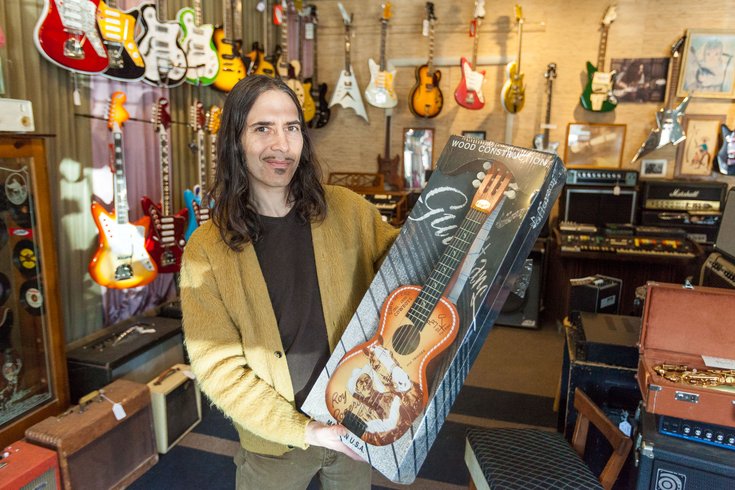 Thom Carroll/PhillyVoice
Thom Carroll/PhillyVoice
